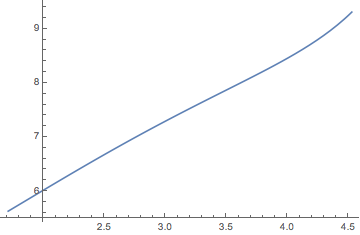Here is my code:
k = 0.55; e = 6; d = 12; n = 1/0.617; R1 = 300; m = 0;
s = NDSolve[{k^2 (w'[y] - 2 Exp[y](1 + Log[Exp[y]/R1])(n - 1) (w[y] + m)/(R1 - (n - 1) Exp[y]))^(3/2)w'[y]^(1/2) ((R1 - (n - 1) Exp[y])/R1)^4 +
w'[y] Exp[-y] ((R1 - (n - 1) Exp[y])/R1)^3 - 1 == 0,
w[Log[5.531]] == R1^3/((R1 - 5.531 (n - 1))^2 (2 n - 2)) - R1/(2 n - 2)}, w,{y,Log[5.531],Log[ R1/(2 n)]}]
Ce1[y_] = Evaluate[w[y] /. s]
Plot[Ce1[y], {y, Log[5.531], Log[ R1/(2 n)]}]
This code ran my computer out of memory but still give no solution. Is this equation too complicated to be solved with NDSolve? If yes, is there any way that I can solve this equation? Thanks.



